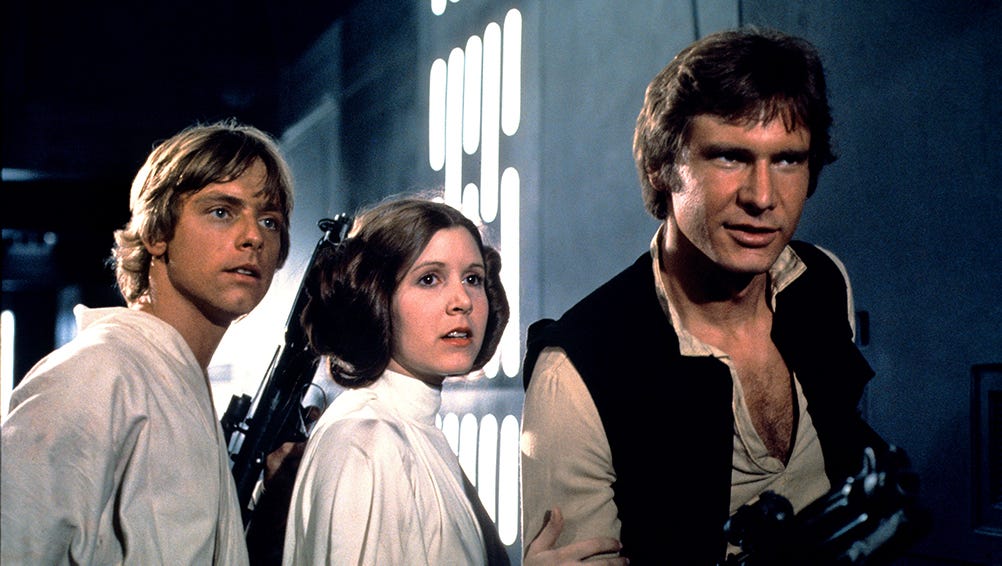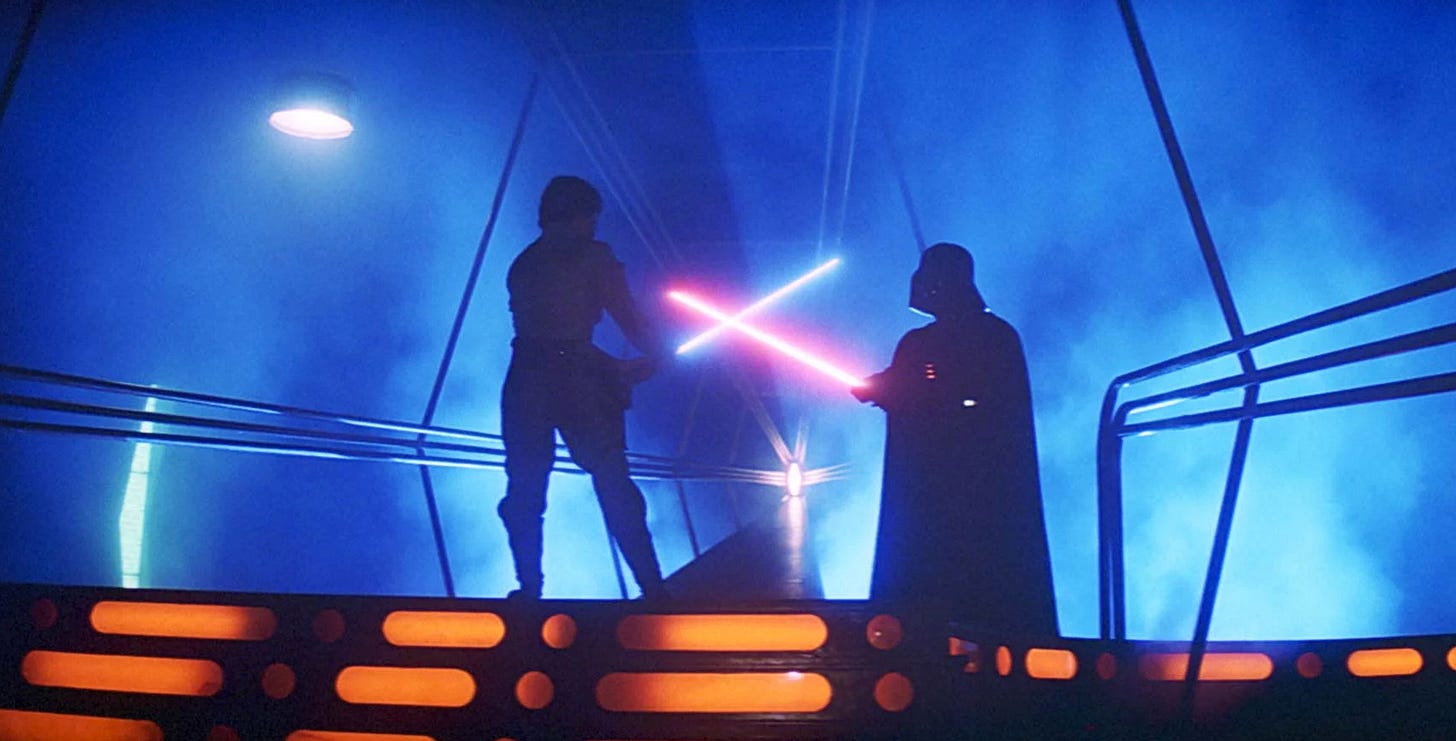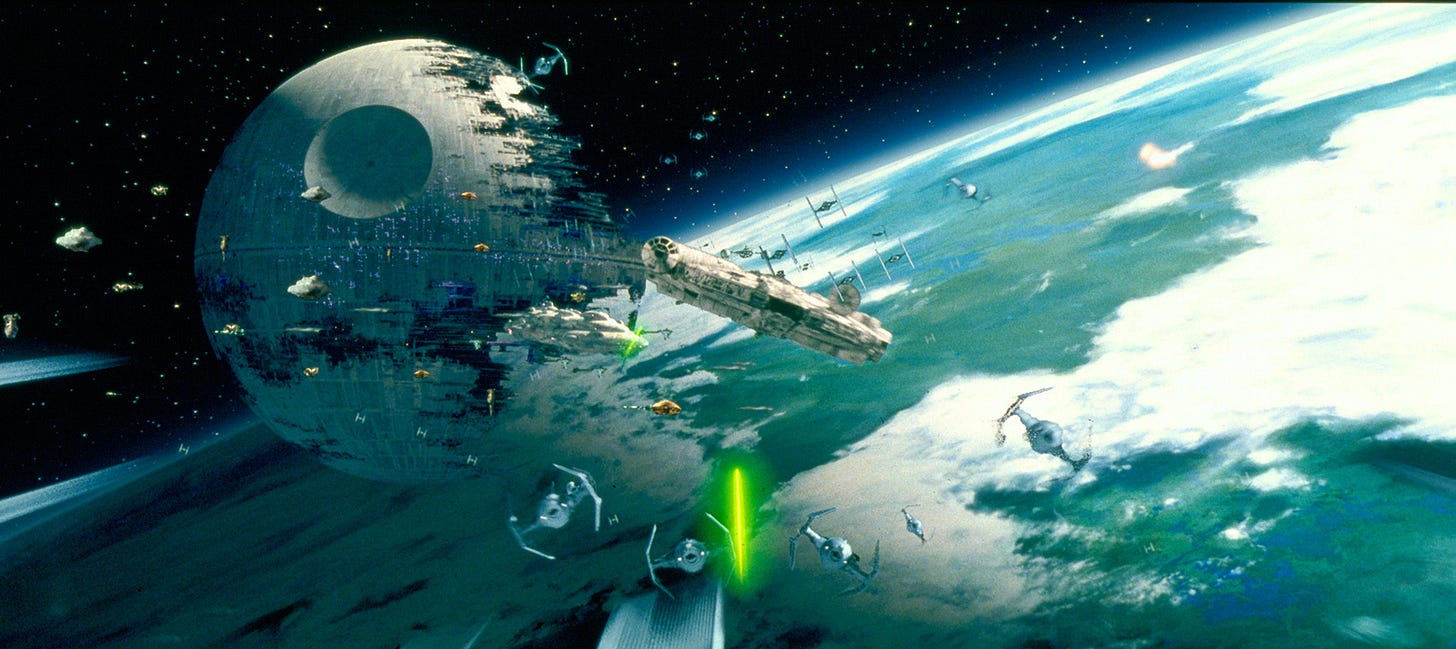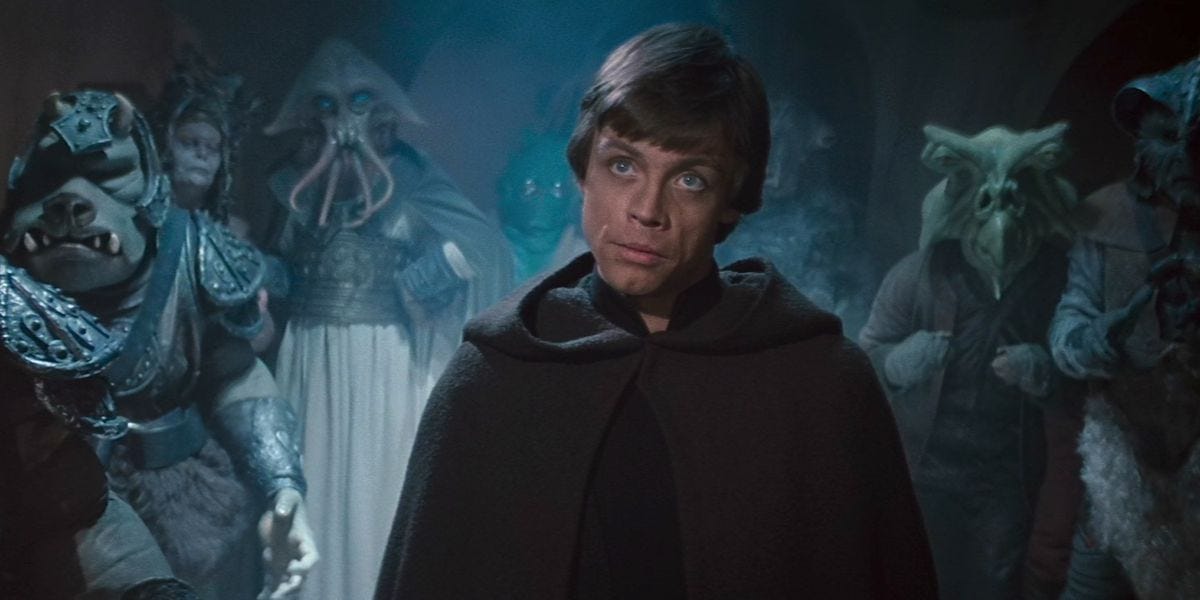To celebrate May the 4th this year, Nerdism is revisiting the Skywalker Saga in a 3-part review. To kickstart we travel back to the original trilogy which comprises of Star Wars, The Empire Strikes Back, and Return of the Jedi, also known as Episodes IV-VI.
Star Wars, released in 1977, follows the story of Luke Skywalker (Mark Hamill) who is a young moisture farmer on the desert planet of Tatooine. On one fateful day, Luke is thrust into the greater conflict in the galaxy by C-3PO (Anthony Daniels) and R2-D2 (Kenny Baker) as they run from the Empire and the villainous Darth Vader (voiced by James Earl Jones). Saved from capture by Obi-Wan Kenobi (Alec Guinness), the group align with Han Solo (Harrison Ford) and Chewbacca (Peter Mayhew) to return the droids to the Rebellion and Princess Leia (Carrie Fisher) in an effort to help the Rebellion destroy the Death Star, an Imperial space station with the power to obliterate planets.
The sequel The Empire Strikes Back released in 1980 to continue the galactic conflict. The Rebellion are on the run from the Empire following the Battle of Yavin (final battle of Star Wars). After a narrow escape on the snowy planet of Hoth, Luke and R2-D2 leave to find Yoda (Frank Oz), an old Jedi Grand Master to continue his training and become a Jedi himself while Han, Chewbacca, Leia, and C-3PO flee from the Empire. Everything comes to a head on Bespin atop Cloud City where the Empire and Darth Vader manipulates the administrator Lando Calrissian (Billy Dee Williams) to spring a trap for both the fleeing rebels and the amateur Jedi. While the trap doesn’t work fully and the rebels escape, it doesn’t come without a great loss and arguably the greatest plot twist of all time.
To conclude the trilogy, Return of the Jedi released in 1983 and follows the rebels as they rescue Han from the clutches of Jabba the Hutt and proceed to the forest moon of Endor to destroy the unfinished and much more powerful second Death Star wile Luke must confront Darth Vader and his master The Emperor (Ian McDiarmid). The film also serves as a conclusion to each character’s arc over the trilogy as Luke finally becomes a Jedi Knight, Han and Leia confess their true feelings, and another reveal about the Skywalkers is announced to shine a new lens on the events of the previous films.
What makes the originals so great is their practicality. Nearly every set, location, costume, and prop is purely practical. The practical nature of the originals allows the audience to become mesmerized by the story as everything happening feels so real and unique from anything else before.
Space battles are even practical for the most part. For example, the trench run on the Death Star during the Battle of Yavin is an entire set made of miniature models. Later in The Empire Strikes Back, all the scenes of Yoda on the ground used an elevated stage to allow Frank Oz to puppeteer Yoda around freely.
While the trilogy utilizes CGI occasionally, its primarily found in Return of the Jedi and even then its used sparingly. There are times that it does look uncanny but for the most part its very impressive for the technology of the time and fits perfectly within the world and context of Star Wars.
The tone of the originals also evolves to match where Luke is on his journey. In Star Wars, the tone is campy and not to be taken that seriously with nearly every other scene containing some sort of joke or sarcastic comment that doesn’t always land but works within the scene’s context. The Empire Strikes Back lowers the jokes and gets more serious in scenes, especially during the scene where Darth Vader reveals the truth to Luke. Finally, Return of the Jedi has very few jokes as the tone shifts to be more serious with the large Battle of Endor taking the majority of the runtime and the scene where Luke tells Leia about her lineage.
To put the icing on the cake, John Williams scores each movie brilliantly with themes such as Binary Sunset and The Imperial March becoming so iconic that they have both been reused countless times across Star Wars projects since.
Overall, the originals introduced us to the galaxy far, far away and gathered a considerable fanbase that has only grown with time. Furthermore, Star Wars has become a staple in film history as multiple films following it have paid tribute and included references to the trilogy.
Star Wars — ★ ★ ★ ★
The Empire Strikes Back — ★ ★ ★ ★ ★
Return of the Jedi — ★ ★ ★ ★
Release Date: 5/25/1977, 5/21/1980, 5/25/1983
Director: George Lucas, Irvin Kershner, Richard Marquand
Runtime: 2hr 1m, 2hr 4m, 2hr 11m
Rating: PG









